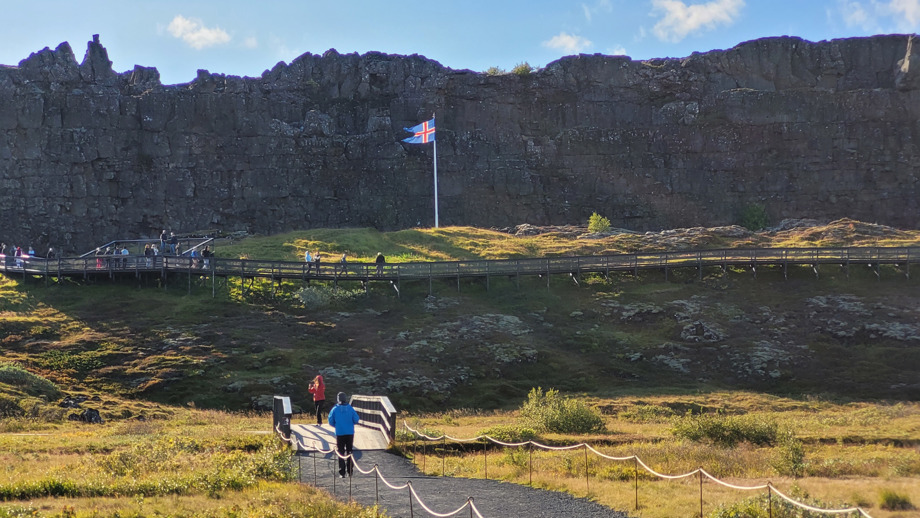Resurrection of Þingvellir
Þingvellir was an important symbol of national unity in Iceland's process towards independence in the 19th and 20th centuries. The last Alþing was held at Þingvellir in the summer of 1798. After the assembly was suspended, Þingvellir was a quiet place, off the beaten track for a period of time.
When the European movement for independence reached Iceland at the beginning of the 19th century, the sagas and the landscape of Þingvellir were revitalised. Þingvellir then played a dominant role in society as a symbol of independence. The old assemblies were uppermost in people's thoughts and the old heroes of the Icelandic sagas were revived in poems and verses.

Drawing of when king Christian IX of Denmark hands over Iceland´s first Constitution in 1874 at Þingvellir.
Planning for independence
The reawakening of nationalism resulted in much discussion about the location of the new Alþing. There were differences of opinion as to where the Alþing should be located, but Þingvellir was suggested immediately. In 1843, King Kristian VIII of Denmark gave a Royal decree on the location of a þing in Iceland that should be called the Alþing. It first met on July 1, 1845 in the Latin School in Reykjavík. The Alþing was purely an advisory assembly and had no legislative power.
In 1848, the first Þingvellir meeting was held, attended by 19 delegates who composed a petition to the king requesting that he provide Icelanders with a national assembly with the same rights enjoyed by Danish subjects. Þingvellir meetings were held irregularly until 1907. At these meetings, political campaigns were planned and arguments were prepared for representatives who brought them to the Alþing and the authorities.
Because of the Þingvellir meetings and the movement for independence, Þingvellir re-established itself as the main meeting place for Icelanders, where they could meet and celebrate the biggest and most important events in the history of the nation.

Lögberg is where Icelands declaration of independence was signed in 1944.
Þingvellir National Park